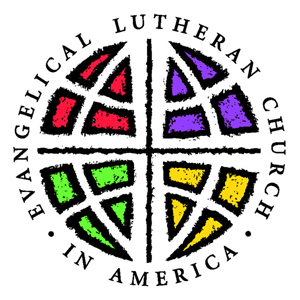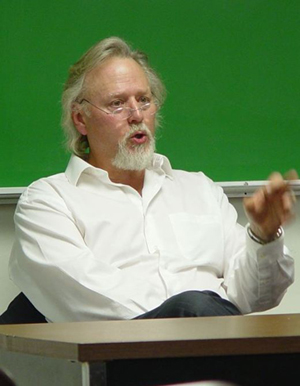
ELCA 2015
Quotations from Paul R. Hinlicky, “After Schism,"
Lutheran Forum,
Vol. 49, No. 2, Summer 2015, pp. 44–50.
Dr. Hinlicky is Tise Professor of Lutheran Studies
at Roanoke College in Salem, Virginia,
and author of many books and articles.
Selected by the Rev. Ronald F. Marshall,
First Lutheran Church of West Seattle
(June 13, 2015).
 |
[1] Parallels to WWII. “I… think that our American Christian
progressives – an approach Bonhoeffer described as ‘Protestantism
without Reformation,’ and that has prevailed in the ELCA – theologize in
ways significantly parallel to the German Christian party [during WWII
in Nazi Germany]” (44).
[2] Spirit Above Scriptures. “Wanting desperately to be on the
right side of history, as if history were God, the German Christians
[during WWII] were quite willing to sacrifice the tradition of the
gospel as embodied in Holy Scripture for some new thing that they
thought the Spirit was doing” (44).
[3] Biggest Schism. “The social controversy (over gays and
lesbians) precipitated the biggest schism in American Lutheran history
[beginning in 2009]” (44).
[4] Abused ELCA Pastors. “[There are] broken synods [in the ELCA
now, where pastors] are ostracized, ridiculed, and otherwise personally
and professionally abused for publicly holding to and consistently
acting on one of three positions, officially recognized in the 2009
Social Statement [on sexuality], more traditional than the fourth,
unconditional blessing of homosexuality as God’s good creation” (44).
[5] Bound Conscience as a Fraud. “[The use of the ‘bound
conscience’ in the ELCA to defend those who wanted to liberalize Church
teachings on homosexuality] is a fraud, bought at the incalculable price
for a church body of selling out theological integrity; so the hypocrisy
continues to extract pound upon pound of flesh from the bleeding corpse
of the ELCA” (45).
[6] Dropping Membership. “The ELCA counted 5.2 million members in
1987 when it was formed by the merger of about two-thirds of American
Lutherans. Today it is well under the 4 million mark and still falling,
having gone from 11,000 congregations to 9,500. ‘From 2002 to 2012
attendance at ELCA churches declined by 28.9 percent,’ The Lutheran
acknowledged recently. Another recent study claimed that, on any given
Sunday, more Lutherans were at church in Missouri and Wisconsin Synod
congregations than in the ELCA…. [But even] the figures 3.8 million
members and 9,500 surviving congregations today are misleading. Sources
from within the bureaucracy reveal that the denomination in fact reckons
with about 2 million more-or-less active members” (45).
[7] Losing Money, Closing Churches & the Hunger Appeal. “The
numerical dive correlates with a financial plunge. Today many of the
metropolitan synods survive financially by feeding off the carcass of
church properties shut down and sold off, a practice that in a downward
spiral incentivizes the shutting down of more struggling congregations.
In its first years, the national ELCA had an operating budget in the
vicinity of $120 million annually (1n 1989 dollars); today it struggles
with about $50 million annually, not including the money allocated from
the ever popular Hunger Appeal to cover ‘administrative’ expenses” (45).
[8] Divided Congregations. “These years [since 2009] also saw
countless ELCA congregations divided, and not only in the rural
backwaters that the Hanson regime wrote off. In addition to those who
left, hundreds more took votes to leave that failed by small percentages
and so left in their wake demoralized shells. In countless congregations
where votes were blocked, or the issues evaded, many individuals
defected, not infrequently those most knowledgeable theologically and/or
more committed churchmen and women” (45).
[9] Lost Trust: Quotas. “The collapse of trust… goes back to the
formation of the ELCA with the establishment of the quota system in
representation, allegedly in order to help move the ELCA to a 10%
membership of people of color or whose primary language is other than
English. The figure of about 2% in this regard has barely budged in 25
years, not surprisingly as foreign and domestic evangelization work has
plummeted while something like 7 out of 10 mission-starts fail. Quotas
function as a purely legalistic claim to a diversity that does not
exist, preventing any real self-critique as to the ELCA’s actual
cultural bondage to false consciousness. And the erosion of trust
begotten by the quota system only furthers the apathy of the people in
the ELCA who, regardless of official voting rights, feel unrepresented
and unheard at the infomercials that our synodical assemblies have
become” (45–46).
[10] Lost Trust: Ignoring Dissent. “[Further erosion of trust is
due to] the lack of any response by ELCA hierarchs, let alone a
constructive one, to the alarm raised by the popular outpourings –
around 1,000 in voluntary attendance on two separate occasions – at the
Call to Faithfulness conferences at Saint Olaf College in the early
1990s. Nor did former President George Anderson keep his promise to meet
with the framers of a document called ‘The 9.5 Theses.’ Nor was there
any acknowledgement of the criticism over how the Social Statement on
abortion was officially ‘interpreted’ to mean the opposite of what it
seems to say. Nor any response to the vocal protests at the continued
voting to approve same-sex relationships, assembly after assembly, until
the ‘right’ decision was made, followed by a corresponding volte-face
ever since: the debate is now over and the subject is closed and it’s
time to move on” (46).
[11] Lost Trust: Leaving Pastors Unprotected. “[Furthermore,
there are the unanswered questions about how] will the ELCA create
policies to protect pastors from bishops who disagree with them on the
sexuality issue? How will congregations seeking pastors be treated by
bishops if, under the ‘bound conscience’ rationale, they do not believe
that same-sex sexual relationships are something Christians can affirm?
And legally, if pastors or congregations are accused of a civil rights
violation for declining to participate in or host a same-sex wedding,
what legal support can they expect from the ELCA in support of their
bound consciences?” (46).
[12] The Unloved ELCA. “[The ELCA] has been from the beginning,
sad to say, a denomination that no one loves and everyone uses for their
own purposes. Still under-reported in this regard is the alleged funding
from the Soros Foundation that mobilized protestors at the ELCA
assemblies in the ramming operation up to the 2009 decision [on
homosexuality]” (46).
[13] Staying in the ELCA. “As through a glass but dimly [1
Corinthians 13:12], I see staying [in the ELCA] as a way of holding the
institutions to account, supporting the dissenters who remain, nurturing
growing doubt about the sacred cows of the ELCA among those who are not
yet open dissenters, and keeping a principled commitment not to…
demonizing theological opponents but rather to practice the Christian
ethic of enemy love – which at times will take the form of sharp,
rational critique of my sisters and brothers who ought to know better,
treating them as church even when they do not act as church. So I will
dissent in place until I am forced to shelter elsewhere” (46).
[14] Hoping for Better Days. “Nothing less than hope will help
[the ELCA], the hope that is not rational optimism based on a
calculation of evidence and trends (which would lead instead to the
rational pessimism that I have just laid out before the reader)
but faith in the God of the gospel to open new doors where every human
way forward seems shut” (46).
[15] ELCA Crackdown. “The ELCA, covetous of that saleable church
property, has [recently] cracked down on the requirements for
congregations seeking exit” (47).
[16] Treating Professor Yeago Cruelly. “Yeago was unceremoniously
(if not cruelly, on the day he returned home from bypass surgery) purged
from Lutheran Theological Southern Seminary after a distinguished career
of service… His sin, evidently, was telling the truth that we in the
ELCA are in a state of impaired fellowship” (47).
[17] The ELCA as a Federation of Congregations. “The church of
Jesus Christ still exists in the ELCA, and no one… should deny that, or
fail to discern and act on that truth. As a continuing member of that
woe-begotten denomination and as one of its ‘teaching theologians,’ I
claim my freedom in Christ to tell the truth openly: not only is
fellowship impaired within the ELCA by the history of abuses of trust
recounted above; not only is my ELCA a complacently heterodox church
belying its own Confession of Faith in Article 2 of its constitution;
but with the 2009 decision, it became de facto a federation of
congregations and so has no rational way to come together as church now
other than by coercing the 2009 position that blesses homosexuality
unconditionally as a good willed by God” (48).
[18] Not Roman Catholic Yet. “I wonder if I stay [in the ELCA]
only because it would be ‘out of the frying pan and into the fire’ to
leave…. [Be that as it may], I am happy to observe that those [Lutherans
who have recently joined the Roman Catholic Church] will now encounter
the reformist papacy of Francis; may God richly bless this breath of
fresh air blowing through the Vatican, catching up at long last with the
Lutheran Reformation! In a better world, I would, with Luther, kiss this
pope’s feet if he would allow the gospel free course publicly to right
history’s wrongs, also in sweeping clean the curia. But that better
world still needs time, and in any event I cannot in conscience go where
ordained sisters cannot likewise tread. So here I stay, I cannot do
otherwise, a sad face in the sorry bosom of conflicted Lutheranism in
North America” (44, 49–50).
[19] Runaway Decay. “6000 of the ELCA's 9400 surviving
congregations are in mortal danger of collapse” [Paul Hinlicky,
"Responding to My Interlocutors," Forum Letter, vol. 44,
October 2015, p. 6].
![]()
“In a country where religious enthusiasms tend to run ahead of common
sense, the insistence on continuity with the Christian past has saved
many churches from captivity to whatever fad or fashion happened to be
passing through at the moment – and often helped save America as well.
In this sense, orthodoxy hasn’t just provided a moral and theological
center for America. It has also often provided a means of necessary
dissent – dissent from the intellectual overconfidence of the Age of
Reason and the anti-intellectualism of nineteenth-century revivalism,
dissent from the cold scientism of the Gospel According to Darwin and
the crass materialism of the Gospel According to the Robber Barons,
dissent from the desiccated rationalism of modern theology and the
dreary literalism of fundamentalism. But for the last five decades, with
the decline of institutional Christianity, the river of orthodoxy has
gradually been drying up…. We have always been a nation of heretics,
but…. what’s changed today… is the weakness of the orthodox response.
[In the past they would have spoken out against those who have invented]
religions that stroke their egos and indulge or even celebrate their
worst impulses.”
[Ross Douthat, Bad Religion: How We Became a Nation of Heretics
(New York: Free Press, 2012) pp. 7–8, 6, 4.]
Copyright © 2015 First Lutheran Church of West Seattle
SEATTLE, WASHINGTON